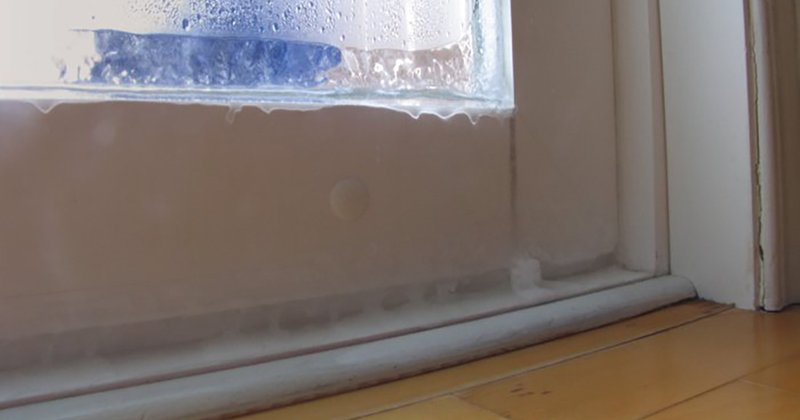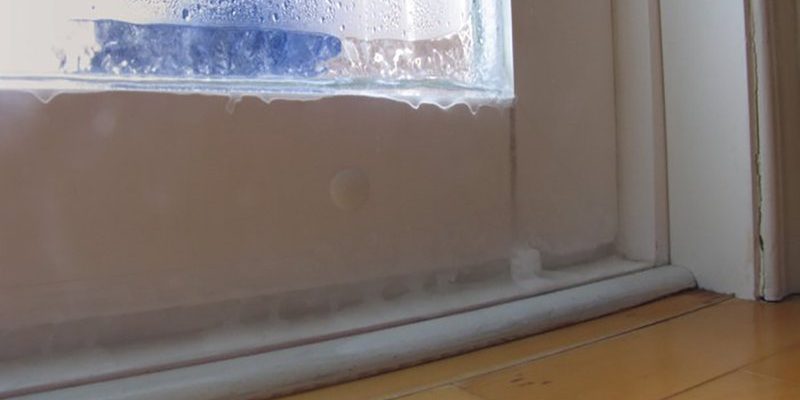
Honestly, condensation on exterior door hardware is a bit like the dew you see on your grass or car windshield. It’s a normal reaction to changing temperatures—but when it happens on your door’s metal parts, it can bring up a lot of questions. Is it a problem? Is your hardware damaged? Or worse, is water sneaking inside where it shouldn’t be? Let’s dig in and clear up why this happens, what you can do about it, and when (if ever) you need to worry.
What Causes Condensation on Door Handles and Locks?
Let me explain: condensation is basically water vapor turning back into liquid on a cool surface. Imagine pouring a cold drink into a glass on a hot day. The outside of the glass gets all wet, right? That’s condensation in action. The same thing happens with your exterior door hardware, especially if it’s made from metal like stainless steel, brass, or nickel.
Here’s the thing—metal is pretty efficient at conducting temperature. So when the air is warm but your hardware is cool (or vice versa), water vapor in the air starts to collect and “sweat” on the metal. This is why you’ll often notice condensation after a cold night followed by a warm, humid morning.
- Temperature swings: When it’s warmer or colder outside than inside, metal hardware quickly adjusts to match the outdoor temp.
- Humidity: High moisture in the air means more water vapor is available to become liquid when it hits a cold surface.
- Material type: Cheaper metal, painted, or plastic hardware tends to condense less than solid, exposed metal.
If you’ve recently installed a new set of smart locks or modern hardware, brands like Schlage, Kwikset, or Yale aren’t immune. All metal hardware is vulnerable to condensation if the conditions are right.
Why Does Condensation Happen More on Exterior Doors?
You might be wondering why it’s only your *outside* door handle that gets wet, while inside handles stay dry. Here’s why: your exterior doors are a meeting point for indoor and outdoor temperatures. It’s like the border between two different climates, so your hardware is always exposed to sudden changes.
Exterior door hardware faces the weather head-on. Sunlight, cold rain, wind, and even the radiant warmth from your heated home all hit the same spot. When one side of the door is warm (inside) and the other side is cold (outside), the door hardware (especially on metal doors or with full-metal locks) can get colder or warmer than the surrounding air. That causes water to condense.
Sometimes, this is made worse if you have:
- Poorly insulated doors (like older wood doors or metal doors with thin foam cores)
- Direct sun and shade creating rapid temperature swings on the hardware
- Storm doors or glass panels that trap humid air near the exterior hardware
In comparison, interior door handles live in a much more stable, climate-controlled world—so they rarely see condensation.
Is Condensation on My Door Lock a Sign of a Problem?
Probably not—at least, not right away. Outdoor condensation is mostly a cosmetic issue. It can look odd, but it’s usually just a result of the weather doing its thing. However, repeated condensation can sometimes point to bigger issues with your door’s insulation or the surrounding frame.
Here’s what to watch for:
- Dripping water INSIDE the door or wall: This means moisture is getting inside, which could eventually cause wood rot or mold.
- Persistent fogging—even on dry days—can mean your door’s weatherstripping or insulation isn’t doing its job.
- Corrosion or spotting on the hardware: Over time, constant moisture can cause rust (on steel) or tarnish (on brass/nickel).
If you see any of these, a little troubleshooting is in order. Check seals, touch-up caulking, or even think about upgrading your door or its weatherproofing. For most people, though, occasional condensation is just an annoyance—not a sign of a major problem.
Normal condensation on exterior locks and handles isn’t a hardware “malfunction”—it’s just nature showing up at your door.
Can Condensation Damage My Exterior Door Hardware?
You might be worried about your fancy digital deadbolt or classic brass handle turning into a science experiment. Here’s the honest truth: condensation is unlikely to *seriously* damage exterior door hardware that’s designed for outdoor use. Most modern brands test their products against weather, humidity, and even salty coastal air.
But, over time, constant moisture can add up. That means:
- Rust and corrosion, especially on cheaper hardware or anything with worn-off paint or plating
- Cosmetic water spots or “pitting” on shiny metals like chrome or nickel
- Sticky lock action, if water works its way inside and dries out internal grease
If you’re using smart locks (like August, Schlage Encode, Yale, or other Wi-Fi/Bluetooth hardware), their batteries and electronics are protected by rubber seals and gaskets. It takes quite a bit for regular condensation to reach the internal electronics—but if you notice moisture INSIDE the lock, pull the batteries, dry things out, and check all the seals. Quick troubleshooting can prevent long-term damage.
How to Minimize Condensation on Exterior Door Hardware
If you’re tired of wiping down your door handle every morning, there are steps you can take. Condensation can’t always be stopped—Mother Nature is stubborn—but you can reduce how much and how often it happens.
- Add or upgrade weatherstripping: This helps keep warm, moist air from hitting cold hardware (and vice versa).
- Choose hardware with weather-resistant coatings: Look for terms like “weatherproof,” “corrosion-resistant,” or “marine grade” in the specs.
- Install a storm door: This creates a buffer zone and keeps the temperature and humidity more stable around your main door hardware.
- Improve ventilation near your entryway to reduce trapped humid air—especially in high-humidity areas or enclosed porches.
Honestly, even just running a dehumidifier inside during sticky months can make a big difference, especially if you live somewhere prone to muggy mornings.
Condensation and Smart Door Hardware: Any Extra Risks?
With smart home devices everywhere, you might be wondering: does condensation affect locks and handles with batteries, touchscreens, or remotes? The good news is, most smart door products—from Yale and Schlage to August and beyond—are designed to handle normal outdoor moisture.
However, there are a few things to keep in mind:
- Battery compartments: If you see condensation inside, remove the batteries and let everything dry out. Replace batteries if needed.
- Access panels and seams: Check for worn seals or cracked covers, especially on older models. These are common places for moisture to sneak in.
- Firmware and support: Some “smart” issues that look like battery or power problems are actually caused by humidity and temperature swings. Keep your lock’s firmware updated for better troubleshooting.
If you ever see unusual condensation on your smart lock’s remote or key fob, don’t ignore it. Wipe it down, let it dry, and check the user manual for support steps. Brands often offer specific code or reset sequences if things get glitchy after a moisture incident.
Are Some Door Hardware Types More Prone to Condensation?
Not all hardware is created equal. Some finishes and materials show water spots more clearly, while others are naturally condensation-resistant. Here’s a look:
- Exposed, bare metal hardware (like stainless steel, nickel, or polished brass): More likely to show beads of water, especially if highly reflective.
- Powder-coated, painted, or plastic-coated hardware: These finishes often “hide” condensation better and may collect less moisture overall.
- Hardware with weather shields or covers: Specialty escutcheons or rain guards keep the bulk of moisture off vulnerable spots.
If you’re shopping for new hardware for a replacement or upgrade, ask about the finish. “PVD” or “lifetime” coatings offer better resistance—not just to fingerprints, but also to weather. Universal door hardware kits often come with both indoor and outdoor parts. If you want the best moisture protection, choose a brand known for weatherproofing.
Final Thoughts: When Should You Worry About Door Hardware Condensation?
At the end of the day, a little condensation on your exterior door hardware is nothing to panic about. It’s a totally normal side effect of physics, especially in places with big temperature swings, high humidity, or unpredictable weather. If your hardware is top quality—from brands like Schlage, Kwikset, or Yale—it’s built to handle a bit of moisture.
But if you see persistent wetness inside the door, signs of rust, or notice that your smart lock isn’t working right after a heavy dew, it’s worth a closer look. A few simple steps—like sealing gaps, running a dehumidifier, or upgrading to weather-resistant hardware—can make a big difference.
So don’t let a few droplets on your door handle ruin your morning. As long as you stay alert for bigger issues and keep things clean, you’ll be ahead of the game—and your home will stay safe and dry, season after season.
